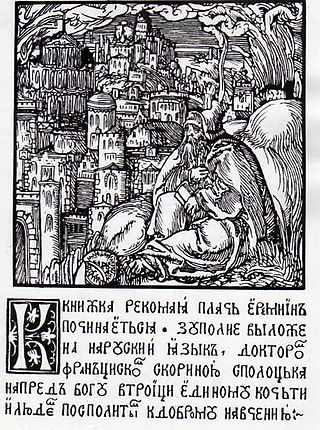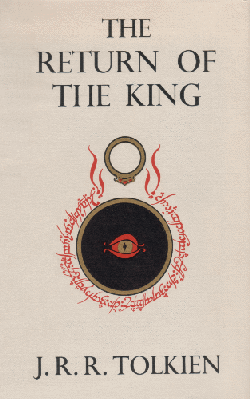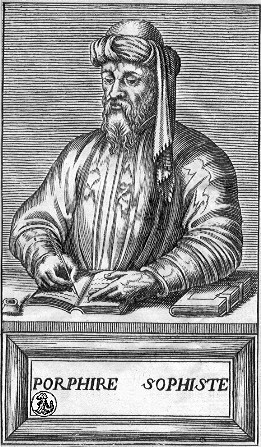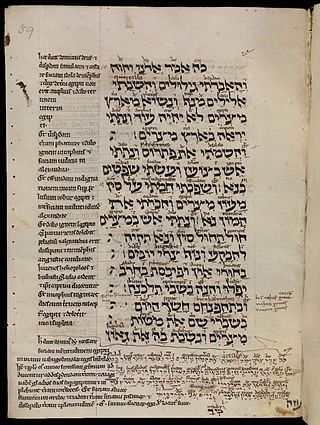
The Book of Lamentations is a collection of poetic laments for the destruction of Jerusalem in 586 BCE. In the Hebrew Bible, it appears in the Ketuvim ("Writings") as one of the Five Megillot alongside the Song of Songs, Book of Ruth, Ecclesiastes, and the Book of Esther. In the Christian Old Testament, it follows the Book of Jeremiah as the prophet Jeremiah is traditionally understood to have been its author.

Latin is a classical language belonging to the Italic branch of the Indo-European languages. Classical Latin is considered a dead language as it is no longer used to produce major texts, while Vulgar Latin evolved into the Romance Languages. Latin was originally spoken by the Latins in Latium, the lower Tiber area around Rome, Italy. Through the expansion of the Roman Republic it became the dominant language in the Italian Peninsula and subsequently throughout the Roman Empire. Even after the fall of Western Rome, Latin remained the common language of international communication, science, scholarship and academia in Europe until well into the early 19th century, when regional vernaculars supplanted it in common academic and political usage—including its own descendants, the Romance languages.

The major scale is one of the most commonly used musical scales, especially in Western music. It is one of the diatonic scales. Like many musical scales, it is made up of seven notes: the eighth duplicates the first at double its frequency so that it is called a higher octave of the same note.
The Old Testament (OT) is the first division of the Christian biblical canon, which is based primarily upon the 24 books of the Hebrew Bible, or Tanakh, a collection of ancient religious Hebrew and occasionally Aramaic writings by the Israelites. The second division of Christian Bibles is the New Testament, written in Koine Greek.

The Return of the King is the third and final volume of J. R. R. Tolkien's The Lord of the Rings, following The Fellowship of the Ring and The Two Towers. It was published in 1955. The story begins in the kingdom of Gondor, which is soon to be attacked by the Dark Lord Sauron.

The Hermetica are texts attributed to the legendary Hellenistic figure Hermes Trismegistus, a syncretic combination of the Greek god Hermes and the Egyptian god Thoth. These texts may vary widely in content and purpose, but by modern convention are usually subdivided into two main categories, the "technical" and "religio-philosophical" Hermetica.

Caesarius of Heisterbach, sometimes erroneously called, in English, Caesar of Heisterbach, was the prior of a Cistercian monastery, Heisterbach Abbey, which was located in the Siebengebirge, near the small town of Oberdollendorf, Germany.

The Sibylline Oracles are a collection of oracular utterances written in Greek hexameters ascribed to the Sibyls, prophetesses who uttered divine revelations in a frenzied state. Fourteen books and eight fragments of Sibylline Oracles survive, in an edition of the 6th or 7th century AD. They are not to be confused with the original Sibylline Books of the ancient Etruscans and Romans which were burned by order of the Roman general Flavius Stilicho in the 4th century AD. Instead, the text is an "odd pastiche" of Hellenistic and Roman mythology interspersed with Jewish, Gnostic and early Christian legend.
In English grammar, a nominative absolute is an absolute, the term coming from Latin absolūtum for "loosened from" or "separated", part of a sentence, functioning as a sentence modifier. It provides an additional information about the main subject and verb. Its analogues are the ablative absolute in Latin, the genitive absolute in Greek, or the locative absolute in Sanskrit.

Porphyry of Tyre was a Neoplatonic philosopher born in Tyre, Roman Phoenicia during Roman rule. He edited and published The Enneads, the only collection of the work of Plotinus, his teacher.

4 Maccabees, also called the Fourth Book of Maccabees and possibly originally known as On the Sovereignty of Reason, is a book written in Koine Greek, likely in the 1st or early 2nd century. It is a homily or philosophic discourse praising the supremacy of pious reason over passion. It is a work that combines Hellenistic Judaism with influence from Greek philosophy, particularly the school of Stoicism.

James Harvey Robinson was an American scholar of history who, with Charles Austin Beard, founded New History, a disciplinary approach that attempts to use history to understand contemporary problems, which greatly broadened the scope of historical scholarship in relation to the social sciences.
J. M. Cohen was a prolific translator of European literature into English.
Sebeos was the reputed author of a 7th-century Armenian history.
Frederic Melvin Wheelock was an American Latin professor, best known for his authorship of Wheelock's Latin.
In linguistics, an absolute construction is a grammatical construction standing apart from a normal or usual syntactical relation with other words or sentence elements. It can be a non-finite clause that is subordinate in form and modifies an entire sentence, an adjective or possessive pronoun standing alone without a modified substantive, or a transitive verb when its object is implied but not stated. The term absolute derives from Latin absolūtum, meaning "loosened from" or "separated".

The Discourse on the Eighth and Ninth is an ancient Hermetic treatise. It is one of the three short texts attributed to the legendary Hellenistic figure Hermes Trismegistus that were discovered among the Nag Hammadi findings.

Guillaume Levasseur de Beauplan or William le Vasseur de Beauplan was a French-Polish cartographer, engineer and architect.
Jeffrey Meyers is an American biographer and literary, art, and film critic.

Ezekiel 39 is the thirty-ninth chapter of the Book of Ezekiel in the Hebrew Bible or the Old Testament of the Christian Bible. This book contains the prophecies attributed to the prophet/priest Ezekiel, and is one of the Books of the Prophets. The previous chapter and verses 1-16 of this chapter form a section dealing with "Gog, of the land of Magog".












